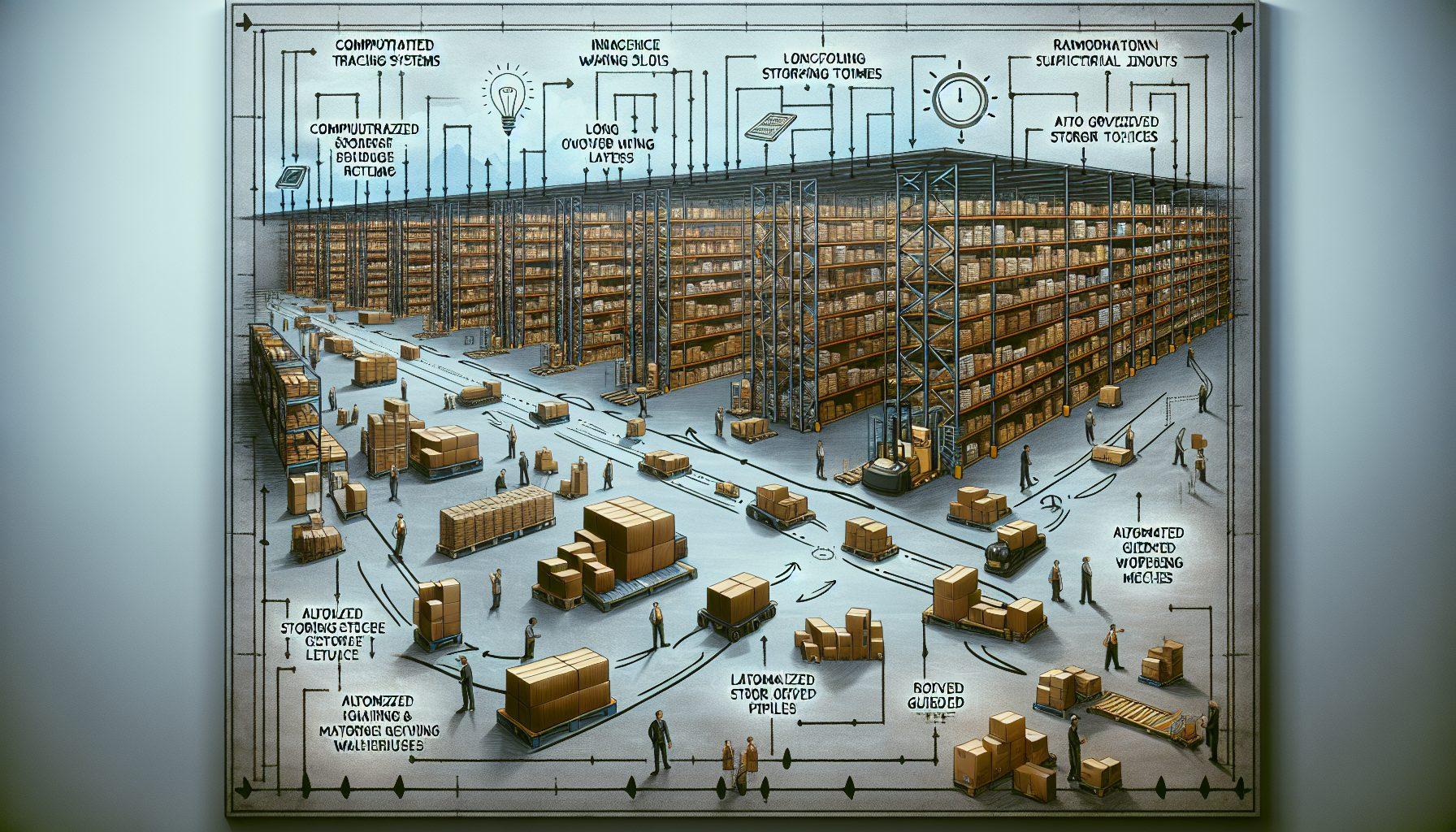Have you noticed material flow issues in your aging warehouse? Are you struggling with inefficiencies that are impacting your productivity and costing you money? If so, you’re not alone. Many warehouse owners and managers face these challenges as their facilities age and their operations evolve. However, there are solutions available to address these material flow issues and optimize your warehouse operations.
The Importance of Addressing Material Flow Issues
Material flow is a critical aspect of warehouse operations. It refers to the movement of goods and materials within the warehouse, from receiving to storage, picking, packing, and shipping. Efficient material flow contributes to enhanced productivity, reduced labor costs, improved accuracy, and increased customer satisfaction.
However, as warehouses age, material flow issues can arise. These issues can include bottlenecks, congestion, poor layout design, inadequate storage systems, and inefficient processes. Ignoring these issues can lead to reduced productivity, increased errors, longer lead times, and dissatisfied customers.
Fortunately, by addressing material flow issues, warehouse owners and managers can improve their operations and achieve significant benefits. Let’s explore some strategies to optimize material flow in aging warehouses.
1. Conduct a Material Flow Evaluation
A material flow evaluation is a comprehensive analysis of your warehouse operations to identify bottlenecks, inefficiencies, and areas for improvement. It involves observing, mapping, and documenting the movement of goods and materials throughout the warehouse.
By conducting a material flow evaluation, you can gain insights into the current state of your warehouse operations and identify opportunities for optimization. This evaluation can help you determine the root causes of material flow issues and develop targeted solutions to address them.
Partnering with a warehouse optimization expert, such as HCO Innovations, can provide you with the expertise and experience to conduct a thorough material flow evaluation. Their team of professionals will assess your warehouse layout, processes, and systems, and provide actionable recommendations to improve material flow.
2. Optimize Warehouse Layout and Design
The layout and design of your warehouse play a significant role in material flow efficiency. An outdated layout can result in bottlenecks, congested aisles, and wasted space. By optimizing your warehouse layout, you can improve material flow and maximize the use of available space.
Consider implementing the following strategies:
- Reorganize storage areas to minimize travel distances and improve accessibility.
- Implement efficient slotting systems to ensure fast and accurate picking.
- Utilize vertical space with mezzanine platforms or high-density storage solutions.
- Invest in conveyor systems or automated guided vehicles (AGVs) for seamless material movement.
These layout and design optimizations can enhance material flow, reduce congestion, and streamline warehouse operations.
3. Improve Pick and Put-away Processes
Pick and put-away processes are critical steps in warehouse operations that directly impact material flow. Inefficient picking and put-away processes can cause delays, errors, and congestion.
To improve these processes, consider the following strategies:
- Implement batch picking or zone picking to minimize travel time.
- Use barcode or RFID technology to automate inventory tracking and reduce picking errors.
- Optimize put-away processes by defining efficient routing and storage locations.
- Train and empower warehouse staff to ensure accurate and efficient picking and put-away.
By focusing on improving these processes, you can enhance material flow, reduce errors, and increase overall operational efficiency.
4. Upgrade Technology and Warehouse Management Systems
Modern technology and warehouse management systems (WMS) can significantly improve material flow in aging warehouses. By investing in updated technology, you can automate manual processes, improve inventory visibility, and enhance overall warehouse efficiency.
Consider integrating the following technologies:
- Warehouse control systems (WCS) to optimize material flow, equipment utilization, and order fulfillment.
- Automated conveyor systems to streamline material movement and reduce manual handling.
- Real-time location systems (RTLS) to track inventory and improve asset management.
- Warehouse management systems (WMS) to automate processes, improve inventory accuracy, and enhance order fulfillment.
By upgrading your technology infrastructure, you can optimize material flow, reduce errors, and improve overall warehouse performance.
5. Invest in Employee Training and Safety
Employee training and safety play a significant role in material flow optimization. Well-trained and engaged employees can contribute to efficient processes, accurate picking, and overall warehouse productivity.
Invest in comprehensive training programs to ensure your workforce understands warehouse operations, equipment usage, and safety procedures. Regular training sessions and performance evaluations can help identify opportunities for improvement and reinforce best practices.
Promote a culture of safety and provide employees with the necessary protective equipment to minimize accidents and injuries. By prioritizing employee training and safety, you can create a conducive work environment that contributes to optimized material flow.
Conclusion
Addressing material flow issues in aging warehouses is crucial for maintaining efficiency, productivity, and customer satisfaction. By conducting a material flow evaluation, optimizing warehouse layout and design, improving pick and put-away processes, upgrading technology, and investing in employee training and safety, you can overcome these challenges and optimize your warehouse operations.
Partnering with warehouse optimization experts like HCO Innovations can provide you with the knowledge and support you need to optimize your material flow effectively.
Don’t let material flow issues hold back your warehouse operations. Take proactive steps to address these issues and unlock the full potential of your aging warehouse.

